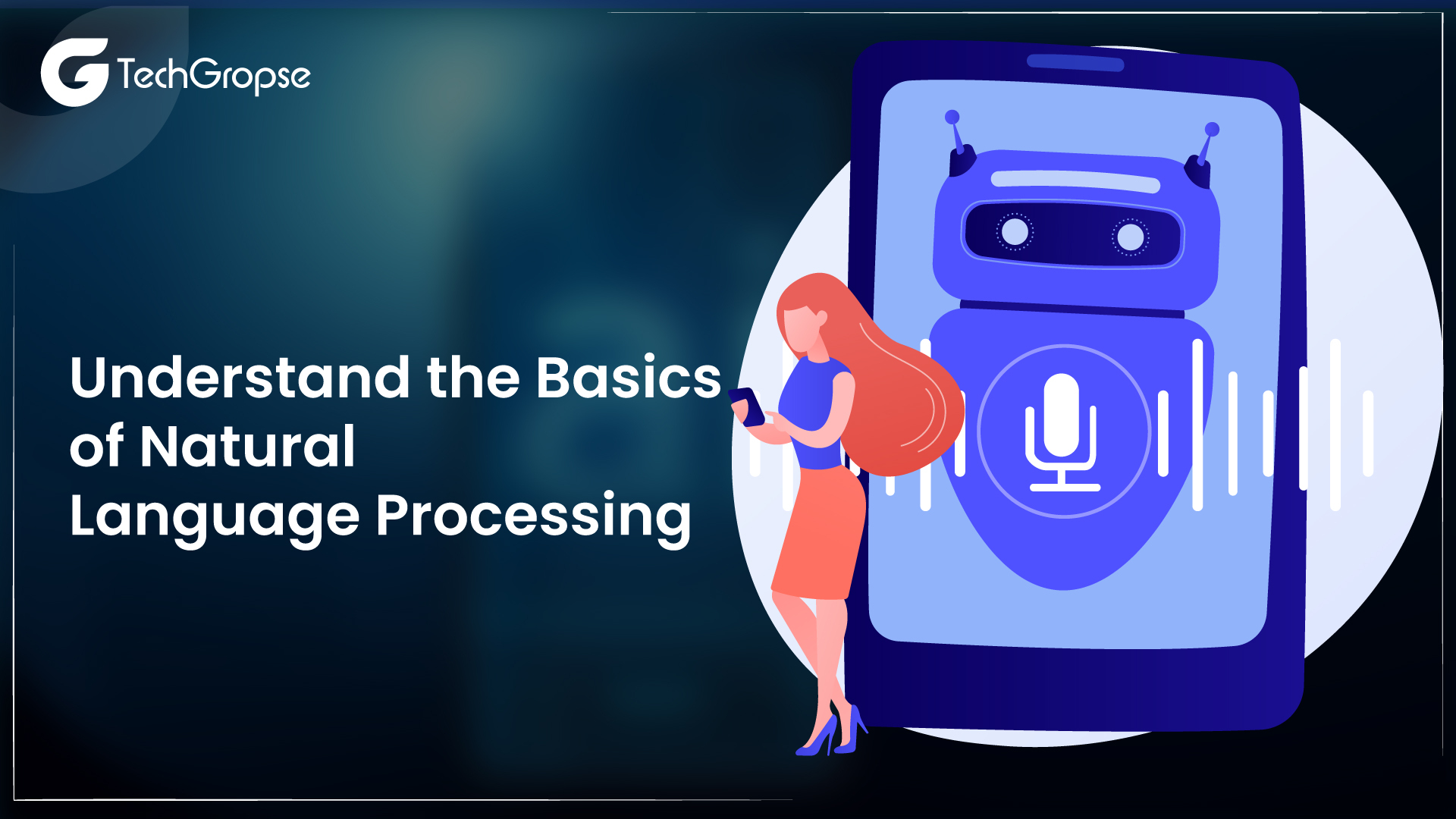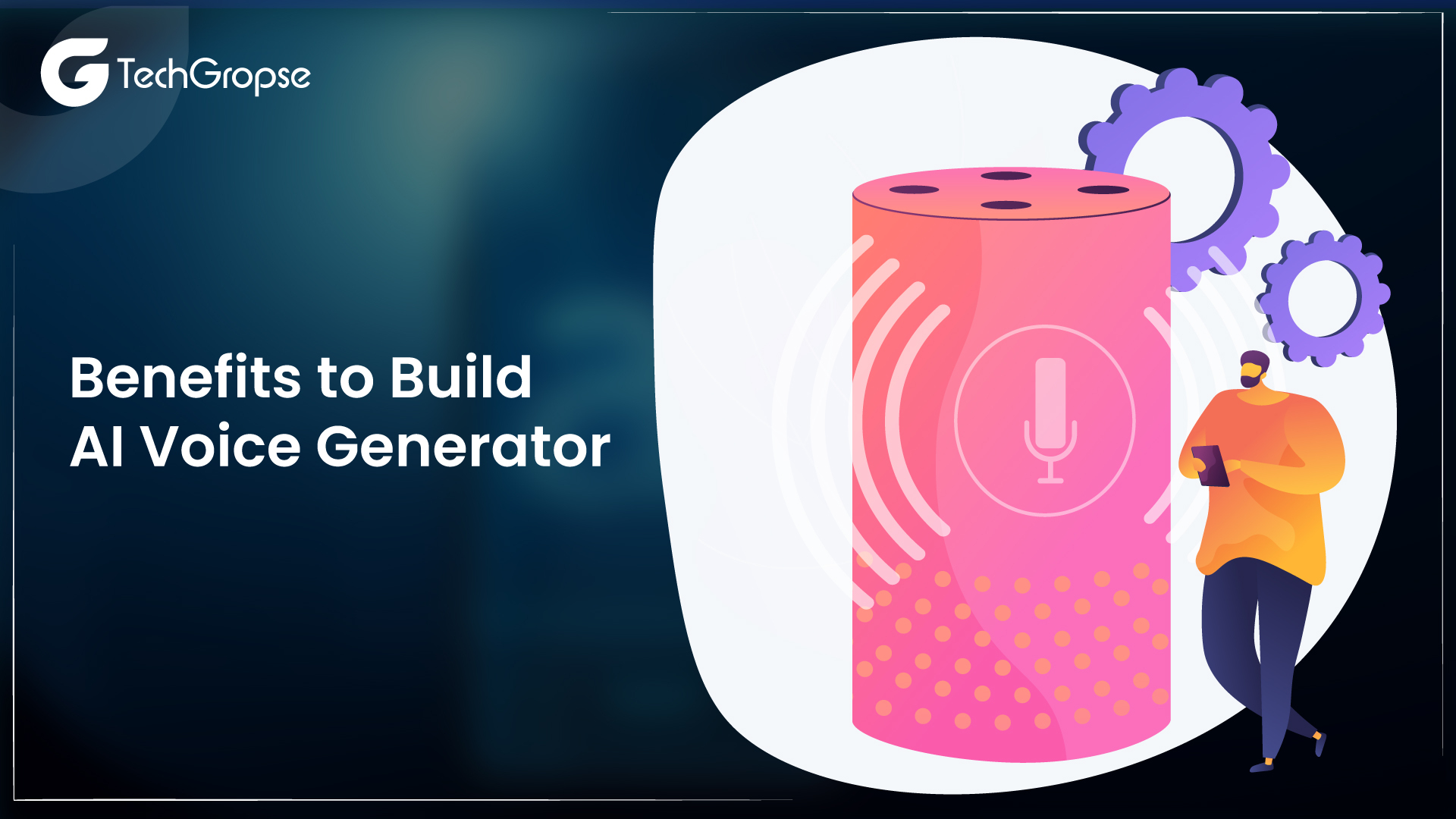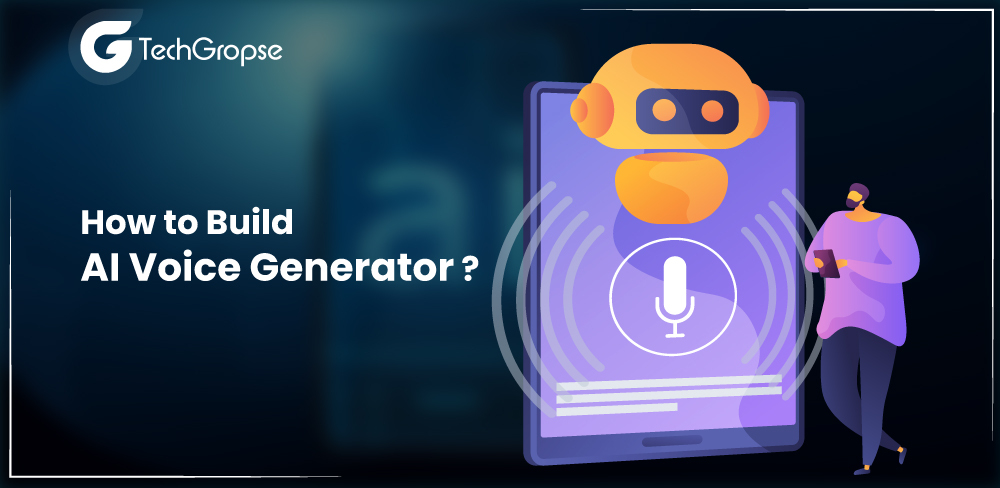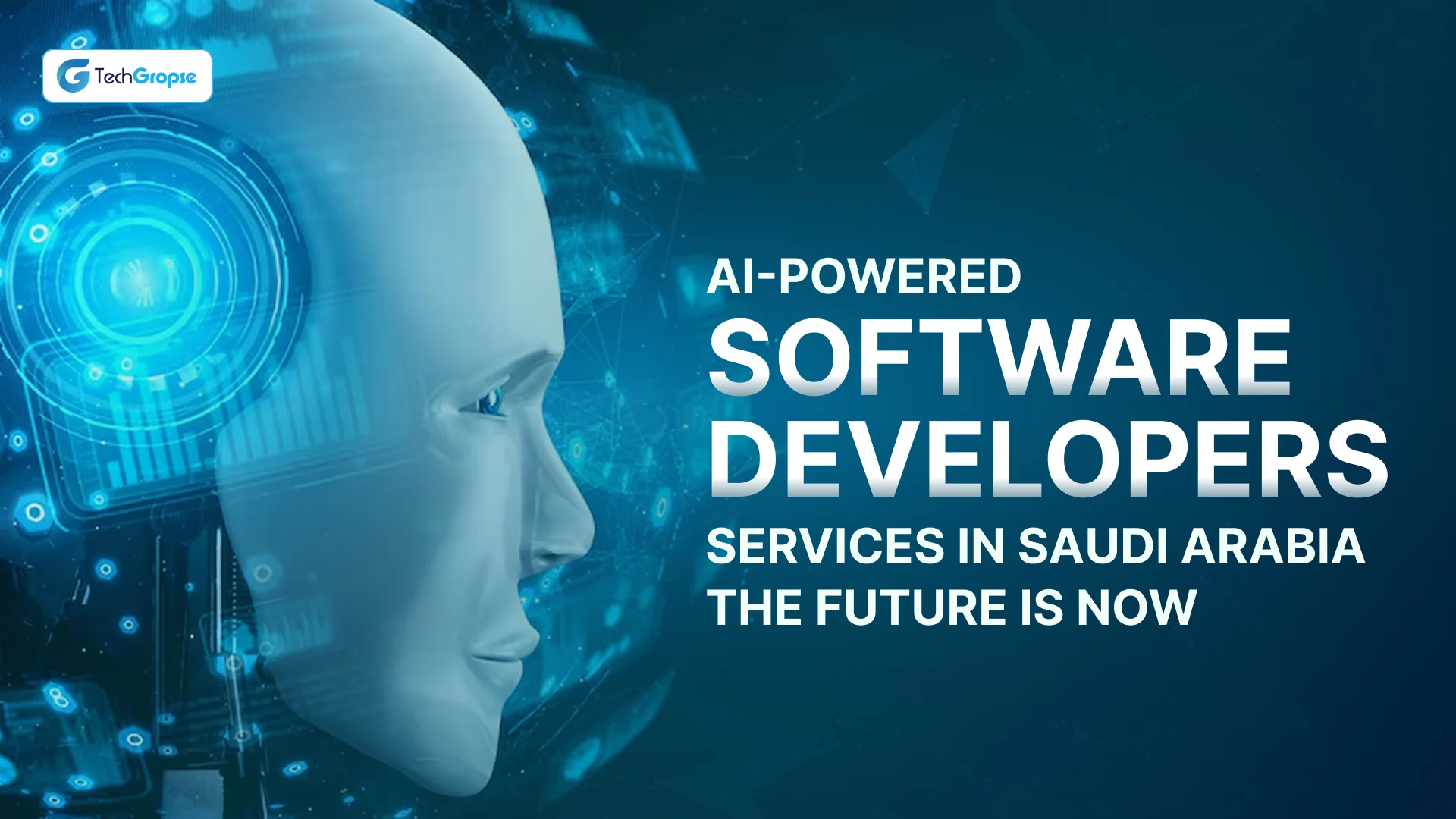In recent years, artificial intelligence (AI) has made remarkable strides in transforming different industries, and one of its most impressive feats is in the field of speech synthesis. You can build AI voice generator by analyzing vast amounts of speech data, the AI model can understand speech patterns, and accents to generate natural-sounding voice output.
AI voice generators have emerged as a groundbreaking technology, capable of generating human-like voices that are virtually indistinguishable from real ones. This innovative technology has far-reaching implications across numerous sectors, revolutionizing the way we interact with machines and improving user experiences like never before.
AI voice generator development is a cutting-edge technology that uses artificial intelligence and deep learning algorithms to synthesize human-like voices. AI voice generators find applications in audiobooks, virtual assistants, accessibility tools, entertainment, and much more, revolutionizing the way we interact with technology and improving the overall user experience.
Whether you are a developer, researcher, or simply curious about the technology behind AI voices, this comprehensive guide will provide valuable insights and practical knowledge to embark on your journey to build AI voice generator.
What is AI Voice Generation?
Basically, AI Voice Generation is creating a computer-generated speech that sounds like a human voice. It is like having your own personal Siri or Alexa, but with a voice, you can customize. With AI voice generation, you can make your creations, be it apps, videos, or even robots, sound more human-like and engaging.
Importance and Applications of AI Voice Generation
So, why is AI voice generation so essential? Well, think about all the times you have interacted with a virtual assistant or listened to an audiobook. The more natural and human-like the voice is, the better the experience.
AI voice generation has a massive range of applications, from helping visually impaired people navigate user interfaces to improving customer service chatbots. It can even be used in the entertainment industry to create lifelike character voices or in language learning apps to enhance pronunciation.
Understand the Basics of Natural Language Processing

Natural Language Processing (NLP) is a branch of custom AI voice generator development that focuses on allowing computers to understand, interpret, and interact with human language. It affects the use of computational methods and algorithms to examine, process, and generate natural language data. NLP plays a strong role in different applications, such as chatbots, language translation, speech recognition, sentiment analysis, and information extraction.
Here are some of the essential concepts and components of NLP:
1. Tokenization
Tokenization is the process of breaking down a text or sentence into smaller units called tokens, like subwords or words. These tokens act as the fundamental building blocks for other NLP tasks.
2. Text Preprocessing
Before NLP algorithms can be applied to text data, it needs preprocessing. Common preprocessing steps include removing punctuation, lowercasing, stop words, and special characters, stemming or lemmatization (reducing words to their root form), and managing capitalization.
3. Part-of-Speech Tagging (POS)
POS tagging is the process of assigning a grammatical category (noun, adjective, verb, etc.) to every word in a sentence. This information is important for understanding the grammatical structure of the text.
4. Named Entity Recognition (NER)
NER involves identifying and classifying entities such as names of organizations, people, locations, dates, etc., in a text.
Advanced Natural Language Processing to Build AI Voice Generator
AI development company where NLP is an exciting field that continues to advance rapidly due to the growth of deep learning techniques and the availability of large-scale datasets.
It allows machines to better understand and interact with human language, leading to applications that improve natural language interfaces and enhance human-computer interactions.
1. Sentiment Analysis
Sentiment analysis describes the sentiment or emotional tone of a piece of text. It can be used to measure whether a statement is positive, negative, or apathetic.
2. Language Modeling
Language models are algorithms that learn to predict the likelihood of a word given its context within a sentence. Famous language models like GPT (Generative Pre-trained Transformer) use deep learning techniques to complete this.
3. Machine Translation
It is a great method to convert text from one language to another. This is achieved using sequence-to-sequence models, which can be trained on large parallel corpora of translated texts.
4. Text Classification
Text classification involves categorizing text documents into categories or predefined classes. This is widely used in sentiment analysis, spam detection, and topic categorization.
5. Word Embeddings
Word embeddings are numerical representations of words that capture semantic relationships between words. They help in transforming words into dense, continuous vectors, which are easier for machine learning models to process.
6. Named Entity Linking (NEL)
NEL goes beyond NER and aims to connect recognized entities to specific entities in a knowledge base or database.
7. Speech Recognition
While not strictly an NLP task, speech recognition involves converting spoken language into written text, and it usually interfaces with NLP for further analysis.
What are the Steps to Build AI Voice Generator?
To Build AI Voice Generator App involves using a combination of techniques from natural language processing (NLP) and speech synthesis.
Here is a high-level overview of the steps that follow a software development company to build an AI voice generator:
1. Data Collection
The first step is to collect a large dataset of human voice recordings. The more various the dataset, the better the AI voice generator will be at mimicking various voices and accents.
2. Preprocessing
Preprocess the audio data to remove noise, normalize volume levels, and ensure constant format and quality.
3. Feature Extraction
Extract suitable features from the preprocessed audio data. In traditional speech synthesis, features such as Mel-Frequency Cepstral Coefficients (MFCCs) are commonly used.
4. Text-to-Speech (TTS) Model
Implement a text-to-speech (TTS) model that converts input text into speech. There are various approaches for TTS like formant synthesis, concatenative synthesis, and more recently, neural network-based approaches like Tacotron or WaveNet.
5. Neural Network-based TTS (Optional)
If you select to use a neural network-based TTS approach, you can consult with the best mobile app developers to execute models such as WaveNet and Tacotron. Tacotron converts text into spectrograms, and WaveNet generates the raw waveform from those spectrograms.
6. Training
Train the TTS model on the preprocessed audio and corresponding text data. This step involves optimizing model parameters to minimize the difference between the generated voice and the target voice.
7. Voice Cloning (Optional)
To create a custom AI voice that mimics a specific person’s voice, you can use voice cloning techniques. These involve fine-tuning a pre-trained TTS model on a smaller dataset of the target speaker’s voice.
8. Post-processing
Once the speech is generated, apply post-processing techniques to improve the naturalness of the output. This could include popular techniques such as pitch contour adjustment, prosody modification, and smoothing.
9. Integration
Hire dedicated developers to integrate the AI voice generator into your desired application or platform like a virtual assistant, chatbot, or audiobook generator.
10. Evaluation
Always assess the performance of your AI voice generator through user feedback and objective metrics to determine areas for progress.
Benefits to Build AI Voice Generator

Building an AI voice generator can bring different benefits, whether you are a developer, a business owner, or an organization.
Here are some of the essential advantages of building your own AI voice generator:
1. Customization
To build AI voice generator, you have full control over the training data, model architecture, and fine-tuning process. This allows you to make a custom voice that aligns perfectly with your brand or project’s needs.
2. Brand Identity
A custom AI voice can become an integral part of your brand identity. It can add a unique personality to your applications, marketing campaigns, or products, making them more recognizable and memorable to users.
3. Integration Flexibility
Building your own AI voice generator gives you the flexibility to integrate it into different platforms and applications seamlessly. You can tailor the integration to suit typical use cases and ensure a constant user experience across various channels.
4. Independence
Depending on third-party AI voice generators can come with some restrictions and dependencies on external services. Building your own AI voice generator allows you to avoid these constraints and ensure continuous availability of your voice generation capabilities.
5. Data Privacy
By developing your own AI voice generator, you have control over the voice data used during training, which can be essential for maintaining data privacy and compliance with regulations.
6. Scalability
As your requirements grow, a custom AI voice generator can be scaled to accommodate enhanced demand without incurring additional costs associated with external service providers.
7. Research and Innovation
Building an AI voice generator involves working with cutting-edge technologies and NLP techniques. It can lead to innovation and the development of new approaches that may have broader applications beyond voice generation.
8. Performance Optimization
By building your own AI voice generator, you can fine-tune it to prioritize specific aspects such as speech rate, naturalness, or pitch, tailored to your target audience and use cases.
9. Knowledge and Expertise
Developing an AI voice generator in-house allows your team to gain valuable knowledge and expertise in NLP, speech synthesis, and deep learning, which can be applied to other AI projects.
10. Cost Control
While building an AI voice generator needs an initial investment in time and resources, it can be cost-effective in the long run, especially when compared to ongoing fees associated with using external AI services.
Implementing the AI Voice Generator in Real-world Applications
Mobile app development company implementing an AI voice generator in real-world applications involves certain steps and considerations.
Here’s a known guide on how to integrate the AI voice generator into your application:
- Training the AI Model: Prepare the AI voice generator using the preprocessed audio data and corresponding text. If you are using a pre-existing solution, this step may involve configuring the model or setting up the API.
- Voice Cloning: If you want to make a custom voice that mimics a specific individual, implement voice cloning techniques to fine-tune the AI model on a smaller dataset of the target speaker’s voice.
- Text-to-Speech Integration: Execute the essential text-to-speech (TTS) components to convert input text into speech. This may involve using language modeling, prosody adjustment, and other post-processing techniques.
- User Interface and Interaction: Design the user interface to allow users to interact with the AI voice generator effectively. It could include providing voice command options, text input fields, or speech recognition for user input.
- Error Handling and Feedback: Implement proper error handling and user feedback mechanisms to ensure a smooth user experience. Inform users if there are any issues with the voice generation process.
- Testing and Quality Assurance: Thoroughly test the AI voice generator in different scenarios to ensure its functionality, accuracy, and performance. This step is essential to identify and fix any potential issues before the application goes live.
List of Industry That Uses AI Voice Generator In Real-World Applications
Here’s a list of industries that use AI voice generators in real-world applications presented in a table format:
| Industry | Real-world Applications of AI Voice Generator |
| Entertainment | Voice-overs for video game characters, animated characters, narration |
| Virtual Assistants | Amazon Alexa, Siri, Google Assistant, and other voice-activated devices |
| Customer Support | AI-powered chatbots delivering spoken responses to customer queries |
| E-learning and Education | Pronunciation practice, language learning, narrated lessons |
| Accessibility | Providing audio content for visually impaired individuals |
| Automotive | In-car infotainment systems, navigation units |
| Advertising and Marketing | Personalized voice messages, improving brand recognition |
| Gaming | Giving voice to virtual game characters |
| Smart Homes and IoT Devices | Smart speakers, voice-controlled home automation, |
| Healthcare | Patient education, voice-enabled medical assistants, healthcare reminders |
| Language Translation | Voice-based language translation services |
| Call Centers | Automated voice responses in call centers |
| Human-Computer Interaction | Allowing voice-based interactions with devices |
| Podcasting | AI-generated podcast episodes and segments |
How Much Does Cost to Build to AI Voice Generator
Building an AI voice generator can differ significantly in cost depending on different factors, such as the complexity of the project, the size of the dataset, the technology stack, and the level of customization required.
Here’s a table with cost estimates to build AI voice generator:
| Cost Component | Description | Estimated Cost Range |
| Data Collection | Collecting a diverse and extensive voice dataset | $1,000 – $10,000 |
| Hardware/Infrastructure | Servers, GPUs, and other hardware requirements | $2,000 – $10,000+ |
| AI Model Development | Developing and training the AI voice generation model | $5,000 – $50,000+ |
| Voice Cloning (Optional) | Fine-tuning the model for custom voice cloning | $2,000 – $20,000+ |
| Post-processing | Implementing prosody adjustment and other techniques | $1,000 – $5,000 |
| Integration and Deployment | Integrating the AI voice generator into the application | $1,000 – $10,000+ |
| Testing and Quality Assurance | Thorough testing and bug fixing | $2,000 – $10,000 |
| Legal and Compliance | Ensuring data privacy and compliance with regulations | $1,000 – $5,000 |
| Maintenance and Updates | Regular maintenance, updates, and improvements | $2,000 – $10,000+ |
| Total | Approximate total cost for building the AI voice generator | $17,000 – $120,000+ |
Final Words
AI voice generation has revolutionized the way we interact with technology, opening up new possibilities for seamless communication and improved user experiences. As the field continues to advance, it is important to stay updated with the latest research and ethical considerations surrounding AI voice generation.
By harnessing the power of cutting-edge technology and understanding the nuances of natural language processing, we can create AI voice generators that are not only highly accurate but also imbued with the nuances and emotions that make human speech so unique.
FAQ: How to Build AI Voice Generator
1. Can AI voice generators produce voices that sound indistinguishable from humans?
AI voice generators have made tremendous advancements, and in some cases, they can produce voices that are highly realistic and difficult to distinguish from human voices. However, achieving complete indistinguishability is still a challenge, particularly when it comes to capturing the subtle nuances and emotions in human speech.
2. Is AI voice generation limited to specific languages?
No, AI voice generation is not limited to specific languages. With the right training data and techniques, AI voice generators can be developed to generate voices in multiple languages. However, it is important to note that the quality and fluency of the generated voices may vary depending on the availability and quality of training data for a particular language.
3. What are the key ethical considerations in AI voice generation?
Ethical considerations in AI voice generation include issues such as consent, privacy, and potential misuse. It is crucial to use voice data responsibly, ensuring that proper consent is obtained from voice data contributors.










